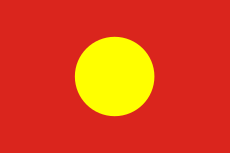Đại Việt
Đại Việt (大越, IPA: [ɗâjˀ vìət], literally Great Viet) is the name of Vietnam for the periods from 1054 to 1400 and from 1428 to 1804. Beginning with the rule of Lý Thánh Tông (r. 1054–1072), the third emperor of the Lý Dynasty, until the rule of Gia Long (r. 1802–1820), the first emperor of the Nguyễn Dynasty, it was the second-longest used name for the country after "Văn Lang".[1]


.jpg)
.jpg)
| History of Vietnam (Names of Vietnam) |
|||||||||||||||||||||||||||||||||||||||||||||||||||||||
|---|---|---|---|---|---|---|---|---|---|---|---|---|---|---|---|---|---|---|---|---|---|---|---|---|---|---|---|---|---|---|---|---|---|---|---|---|---|---|---|---|---|---|---|---|---|---|---|---|---|---|---|---|---|---|---|
| |||||||||||||||||||||||||||||||||||||||||||||||||||||||
History
Beginning with the rule of Đinh Tiên Hoàng (r. 968–979), the country had been referred to officially as Đại Cồ Việt (大瞿越). The term "Việt" is the same as the Chinese word "Yue", a name in ancient times of various non-Chinese groups who lived in what is now northern/southern China and northern Việt Nam. In 1010 Lý Thái Tổ, founder of the Lý Dynasty, issued the "Edict on the Transfer of the Capital" and moved the capital of Đại Cồ Việt to Thăng Long (Hanoi) and built the Imperial Citadel of Thăng Long where the Hanoi Citadel would later stand.
In 1054, Lý Thánh Tông – the third Lý emperor – renamed the country Đại Việt. In 1149 the Lý dynasty opened Vân Đồn seaport in the modern north-eastern province of Quảng Ninh to foreign trade.[lower-alpha 1]
Đại Việt is a strategic location. By invading Đại Việt, the Mongols would be able to bypass the Himalaya and drive deep into South East Asia. However, the Mongolians of the Yuan Dynasty invaded Đại Việt three times and were defeated. The last battle, the Battle of Bạch Đằng (1288), was a decisive defeat for the Mongolians. Đại Việt's perseverance thwarted Mongolian attempts to conquer South East Asia and prevented the third Mongolian invasion of Japan, as the Mongol navy was completely destroyed during Bạch Đằng. This became one the greatest victories in Vietnamese military history.
In 1400, the founder of the Hồ dynasty, Hồ Quý Ly usurped the throne and changed the country's name to "Đại Ngưu" (大虞), but his dynasty was overthrown by the invading Ming Empire who annexed Đại Ngu in 1407 for 20 years until 1427. The Ming renamed the area "Giao Chỉ (or Jiaozhi)". In 1428, Lê Lợi, the founder of the Lê dynasty, liberated Giao Chỉ and restored the kingdom of "Đại Việt".
The name "Đại Việt" came to end when the Nguyễn dynasty took power. The country's name was officially changed yet again, in 1804, this time to "Việt Nam" (越南) by Gia Long.
Party
The name Đại Việt was also taken by one of the nationalist factions in 1936.[lower-alpha 2]
See also
- Names of Việt Nam
- List of monarchs of Việt Nam
Notes
- An embryonic independent Vietnamese administration was established and progressively renewed which laid a solid foundation for the development of the Vietnamese Kingdom of Đại Việt (Great Việt) during the Lý (1010−1226), Trần (1226-1400), and the early stage of the Lê (1428-1788) Dynasties. In 1149, Javanese and Siamese merchants arrived eager to trade with Đại Việt. The Lý Dynasty opened Vân Đồn seaport in the modern north-eastern province of Quảng Ninh for foreign trade.[2]
- When Nguyễn Hải Thần and his Việt Cách, the Việt Quốc, the Đại Việt, and others arrived in Hà Nội with their small armed forces, the Việt Minh had already established their administrative system; it was not strong, but it had spread to most of the provinces.[3]
Citations
- Dai Viet - Historical Kingdom, Việt Nam.
- Hoàng Anh Tuấn, pp. 16-17.
- Nguyen Công Luan, p. 41.
References
- Coedès, George (1968). Walter F. Vella (ed.). The Indianized States of Southeast Asia. Trans: Susan Brown Cowing. University of Hawaii Press. ISBN 978-0-8248-0368-1.
- "Dai Viet - Historical Kingdom, Vietnam". Encyclopedia Britannica. Encyclopedia Britannica, Inc. 2019.
- Hoang Anh Tuấn (2007). Silk for Silver: Dutch-Vietnamese relations, 1637-1700. Brill. ISBN 978-9-04-742169-6.
- Nguyen Công Luan (2012). Nationalist in the Viet Nam Wars: Memoirs of a Victim Turned Soldier. Indiana University Press. ISBN 978-0-25-335687-1.